

Moroccan Cuisine
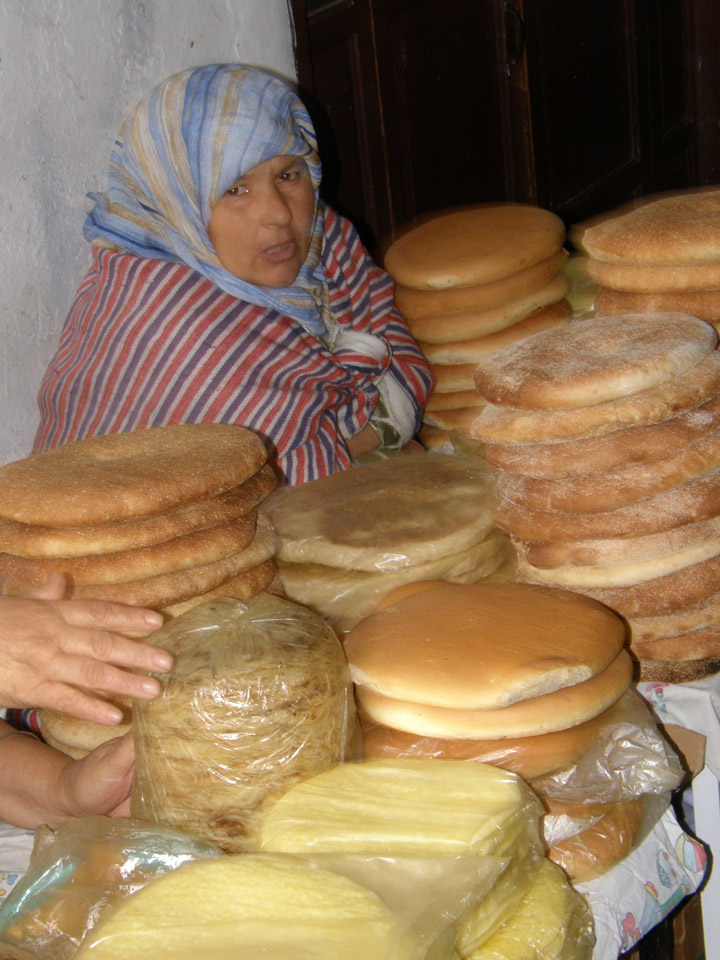
Moroccan Bread
Moroccan cuisine has long been considered as one of the most diversified cuisines in the world. The reason is because of the interaction of Morocco with the outside world for centuries. The cuisine of Morocco is a mix of Arab, Berber, Moorish, Middle Eastern, Mediterranean African, Iberian, and Jewish influences. The cooks in the royal kitchens of Fez, Meknes, Marrakech, Rabat and Tetouan refined Moroccan cuisine over the centuries and created the basis for what is known as Moroccan cuisine today.
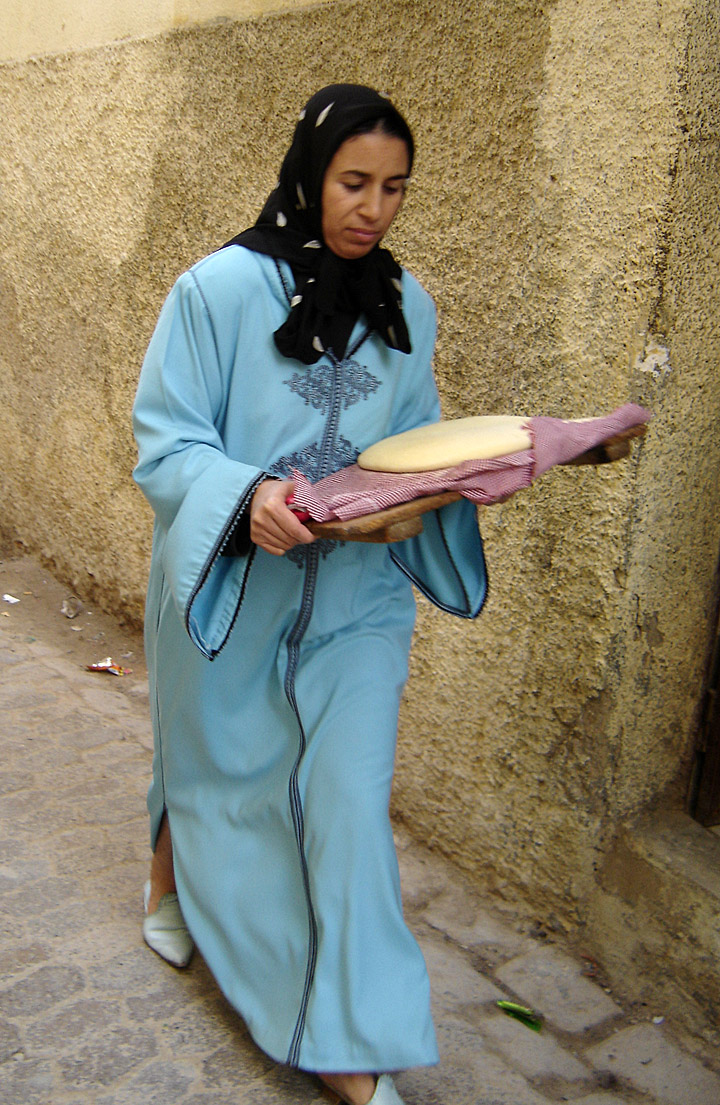
taking her bread dough to the bakery for baking
Being at the crossroads of many civilizations, the cuisine of Morocco has been influenced by the native Berber cuisine, the Arabic Andalusian cuisine; brought by the Moriscos when they left Spain, the Turkish cuisine from the Turkish and the Middle Eastern cuisines brought by the Arabs as well as the Jewish cuisine.
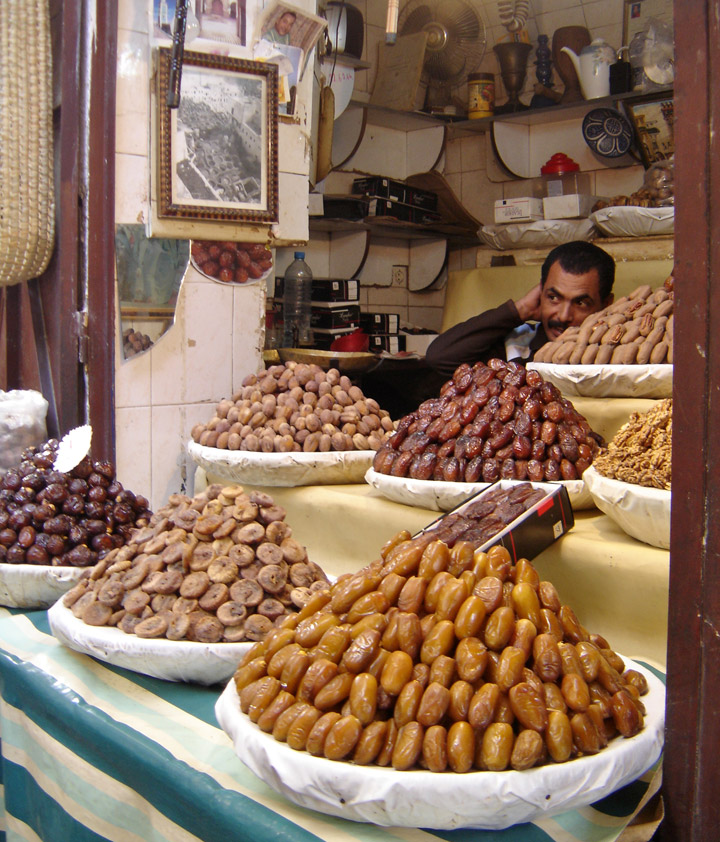
figs and dates
The history of Morocco is reflected in its cuisine. Political refugees left Baghdad in the Middle Ages and settled in Morocco, bringing with them traditional recipes that are now common in Morocco but forgotten in the Middle East. We know this because there are striking similarities between a 12th century (Common Era) collection of recipes by Al-Baghdadi, and contemporary Moroccan dishes. A signature characteristic is cooking fruit with meat like quince with lamb or apricots with chicken. Further influences upon Moroccan cuisine came from the Morisco (Muslim refugees) who were expelled from Spain during the Spanish inquisition.

beef and lamb are the main meats
According to Paula Wolfert, the specialist of Moroccan cuisine and author of a renowned book on the subject, “ To my mind four things are necessary before a nation can develop a great cuisine. The first is an abundance of fine ingredients, from a rich land. The second is a variety of cultural influences: the history of the nation, including its domination by foreign powers, and the culinary secrets it has brought back from its own imperialist adventures. Third, a great civilization, if a country has not had its day in the sun, its cuisine will probably not be great; great food and a great civilization go together. Last, the existence of a refined palace life, without royal kitchens, without a Versailles or a Forbidden City in Peking, without, in short, the demands of a cultivated court, the imaginations of a nation's cooks will not be challenged. Morocco, fortunately, is blessed with all four. ”
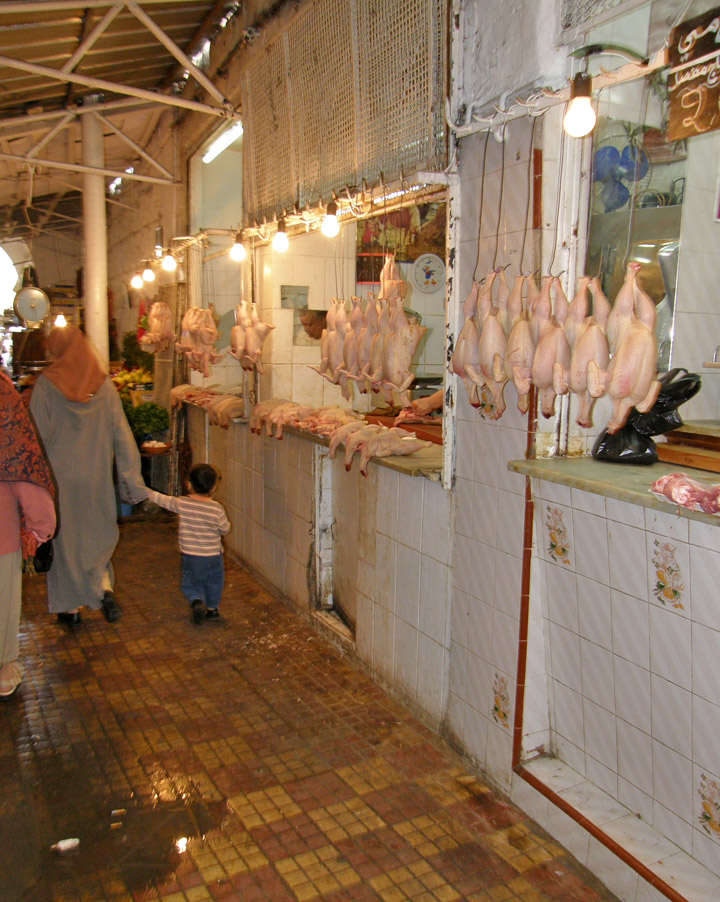
chicken is a common ingredient
Morocco produces a large range of Mediterranean fruits and vegetables and even some tropical ones. The country produces large quantities of sheep, cattle, poultry, and seafood which serve as a base for the cuisine.
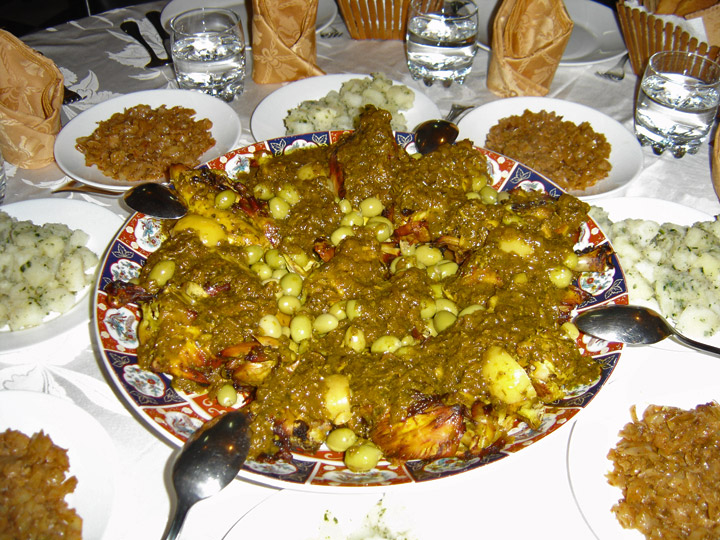
an Apples and Olives dish
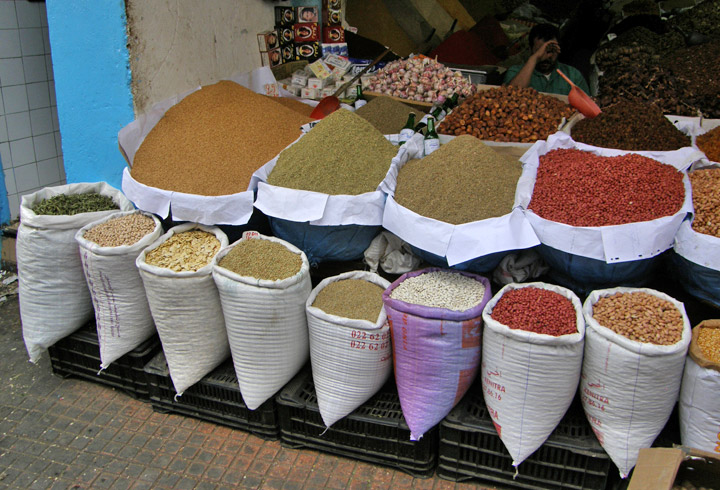
spices
Spices are used extensively in Moroccan food. While spices have been imported to Morocco for thousands of years, many ingredients, like saffron from Tiliouine, mint and olives from Meknes, and oranges and lemons from Fez, are home-grown. Common spices include karfa (cinnamon), kamoun (cumin), kharkoum (turmeric), skingbir (ginger), libzar (pepper) , tahmira (paprika), anis seed, sesame seed, kasbour (coriander), maadnous (parsley), zaafrane beldi (saffron) and mint.
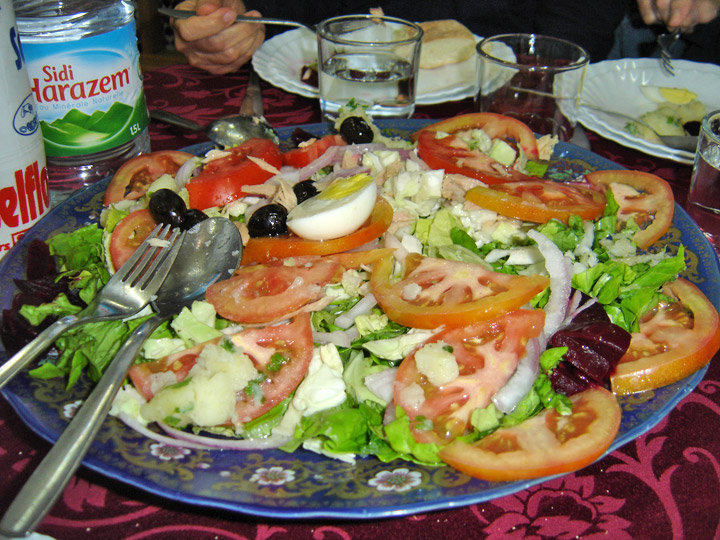
often start with tomatoes and olives
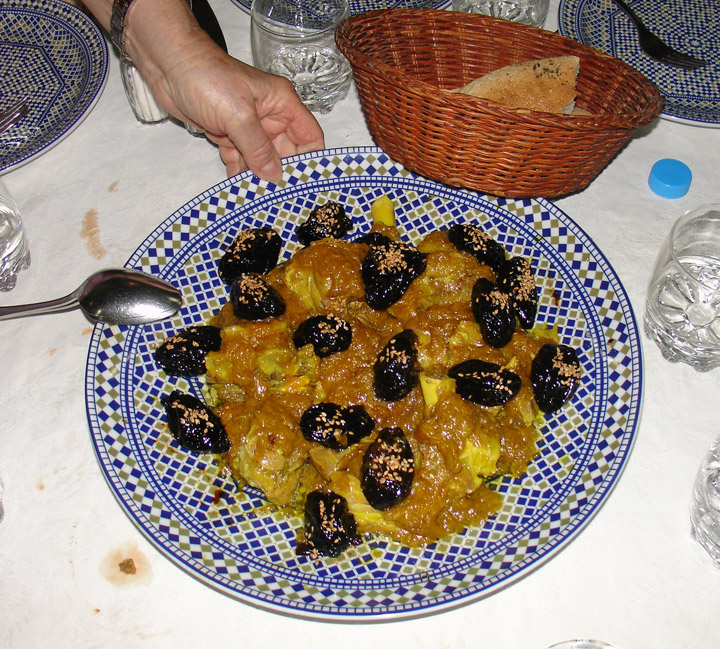
Prunes, Onions and Lamb
The midday meal is the main meal, with the exception of the holy month of
Ramadan. The typical formal meal begins with a series of hot and cold salads,
followed by a tagine. Bread is eaten with every meal. Often a lamb or chicken
dish is next, followed by couscous topped with meats and vegetables. A cup of
sweet mint tea is commonly used to end the meal. It is common for Moroccans to
eat using the fingers of their hand, and use bread as a "utensil."
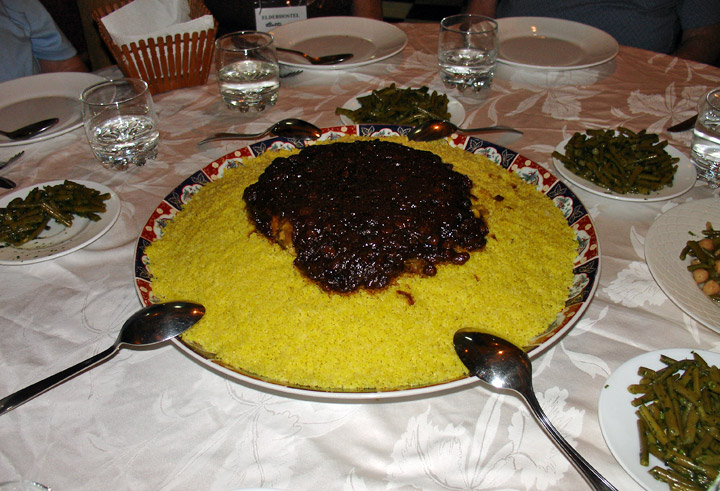
Chicken Couscous with Onions and Raisin sauce
The main Moroccan dish most people are familiar with is couscous which is very
old and is probably of Berber origin.
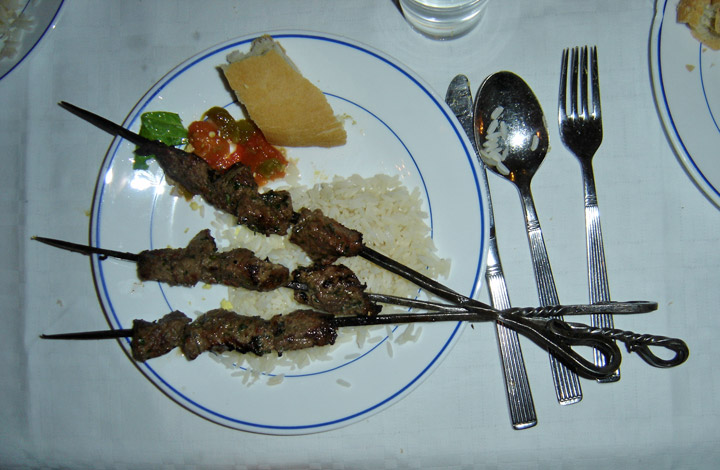
Brochette
Beef is the most commonly eaten red meat in Morocco. Lamb is preferred, but is not as common due to its higher cost. Poultry was historically used and the importance of seafood is increasing in Moroccan food. The breed of sheep in North Africa has much of its fat concentrated in its tail, which means that Moroccan lamb does not have the pungent flavor that Western lamb and mutton can have.
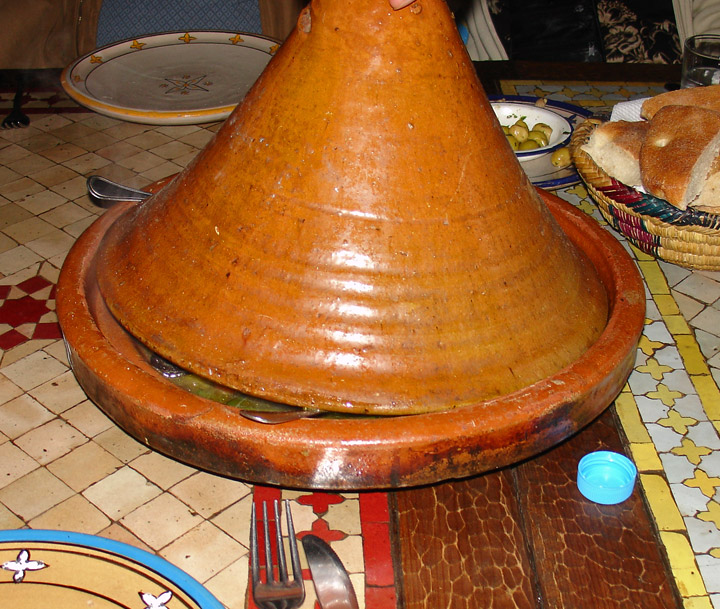
brought to the table covered
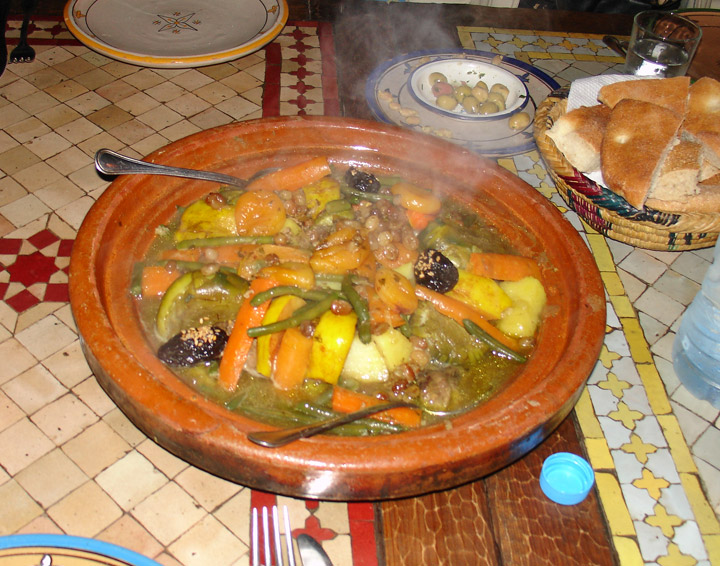
Tajine
Among the most famous Moroccan dishes are Couscous, Pastilla (also spelled Bsteeya or Bastilla), Tajine, Tanjia and Harira. Although the latter is a soup, it is considered as a dish in itself and is served as such or with dates especially during the month of Ramadan.
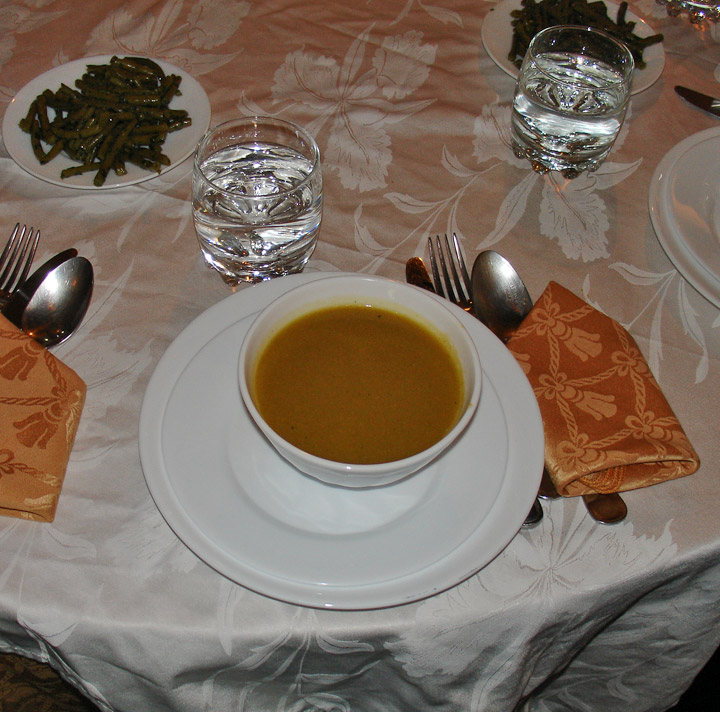
often starts with soup "Harira"
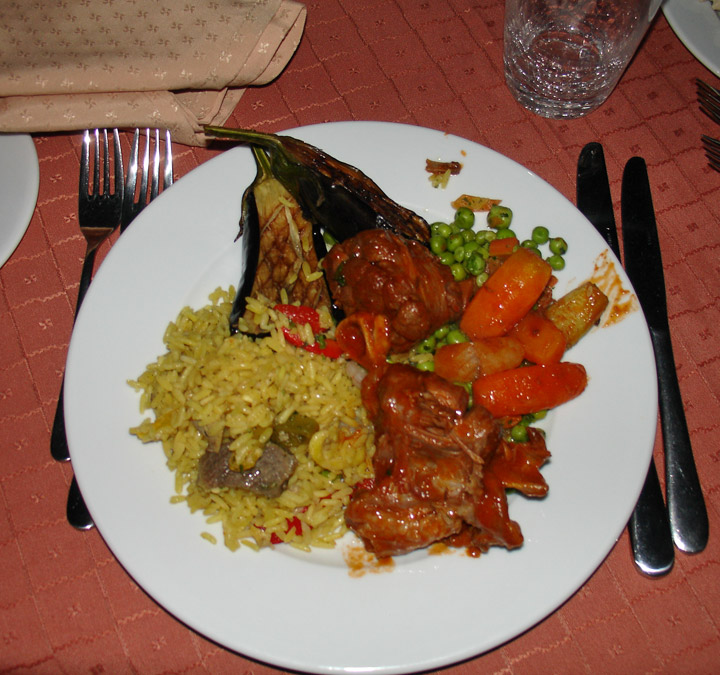
eggplant, meat and rice
Sweets are not necessarily served at the end of a Moroccan meal. A common dessert is kaab el ghzal ("gazelle's horns"), which is a pastry stuffed with almond paste and topped with sugar. Another dessert is honey cakes, which is essentially pretzel-shaped pieces of dough deep-fried and dipped into a hot pot of honey and sprinkled with sesame seeds. Halwa Shebakia are cookies eaten during the month of Ramadan. Zucre Coco are coconut fudge cakes.
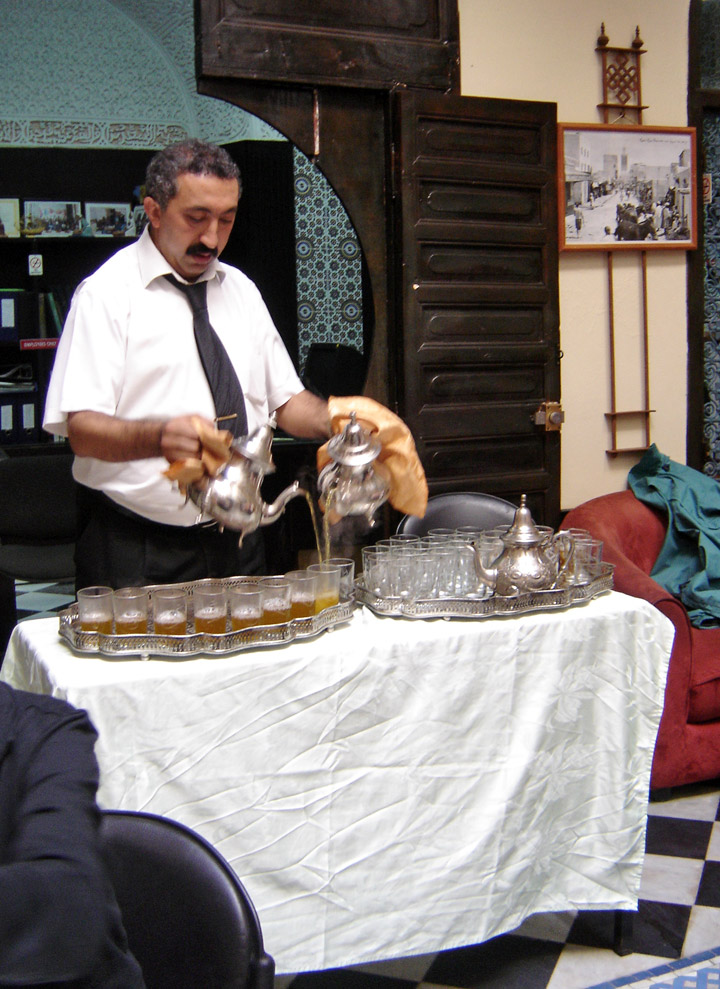
pouring green tea with mint.
The most popular drink is green tea with mint. Traditionally, making good mint
tea in Morocco is considered an art form and the drinking of it with friends and
family members is one of the important rituals of the day. The technique of
pouring the tea is as crucial as the quality of the tea. The tea is accompanied
with hard sugar cones or lumps.
Moroccan tea pots have long, curved pouring spouts and this allows the tea to be
poured evenly into tiny glasses from a height. To acquire the optimum taste,
glasses are filled in two stages. The Moroccans traditionally like tea with
bubbles, so while pouring they hold the teapot high above the glasses.
The tea is sold all around the country usually around $2-3 a cup. You can also
purchase it from supermarkets around the country for various prices.
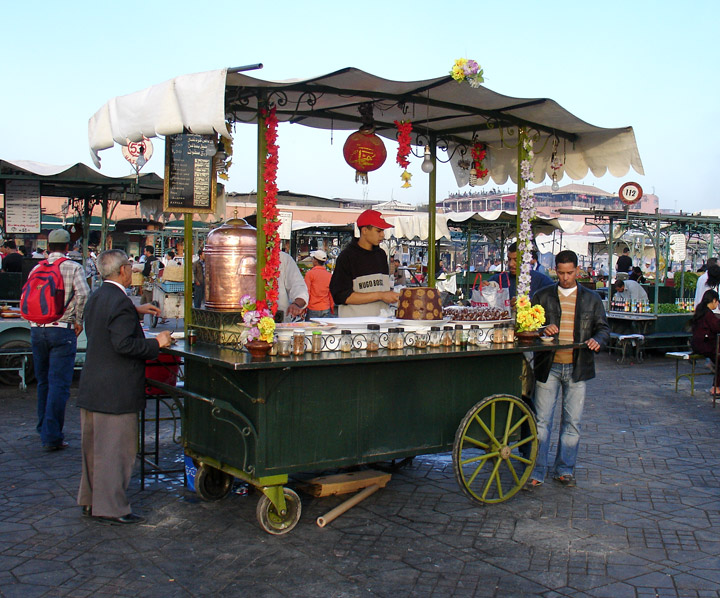
fast food stand in the Djemaa el Fna square in Marrakech
Selling fast food in the street has long been a tradition, and the best example is Djemaa el Fna square in Marrakech. Starting in the 1980s, new snack restaurants started serving "Bocadillo" (which is a Spanish word for a sandwich, widely used in Morocco). The bocadillo is a baguette filled with salad and a choice of meats, or similar to a tortilla, which is also a widely used term.
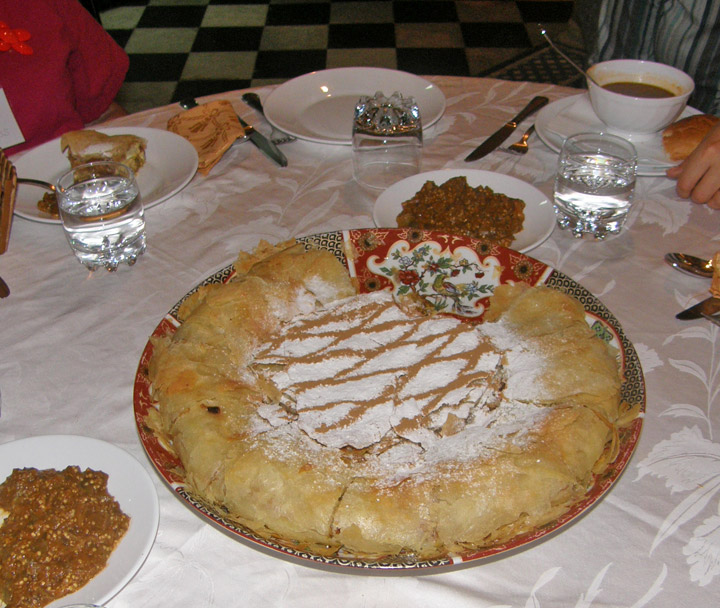
Chicken and Almonds Pastille
During the 1990s, a new trend started to emerge. New dairy product shops (Mahlaba in Moroccan Arabic) began to open throughout cities in Morocco. Those mahlabas generally offer all types of dairy products, juices, and breakfasts as well as bocadillos, competing with former established snack restaurants.
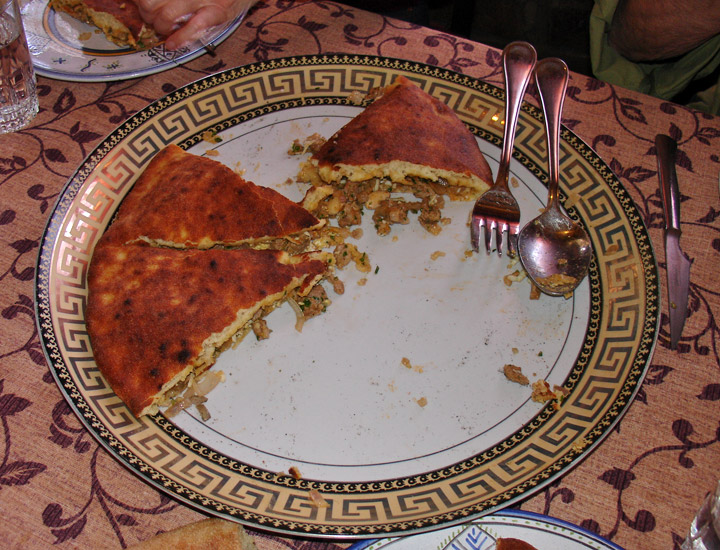
Medfuna Pizza (The Buried One)
Almonds and meat inside, made by men
The late 1990s also experienced the
opening of franchises of multinational fast food chains, especially in major
cities.
Text from Wikipedia

the sacrifice of the lamb
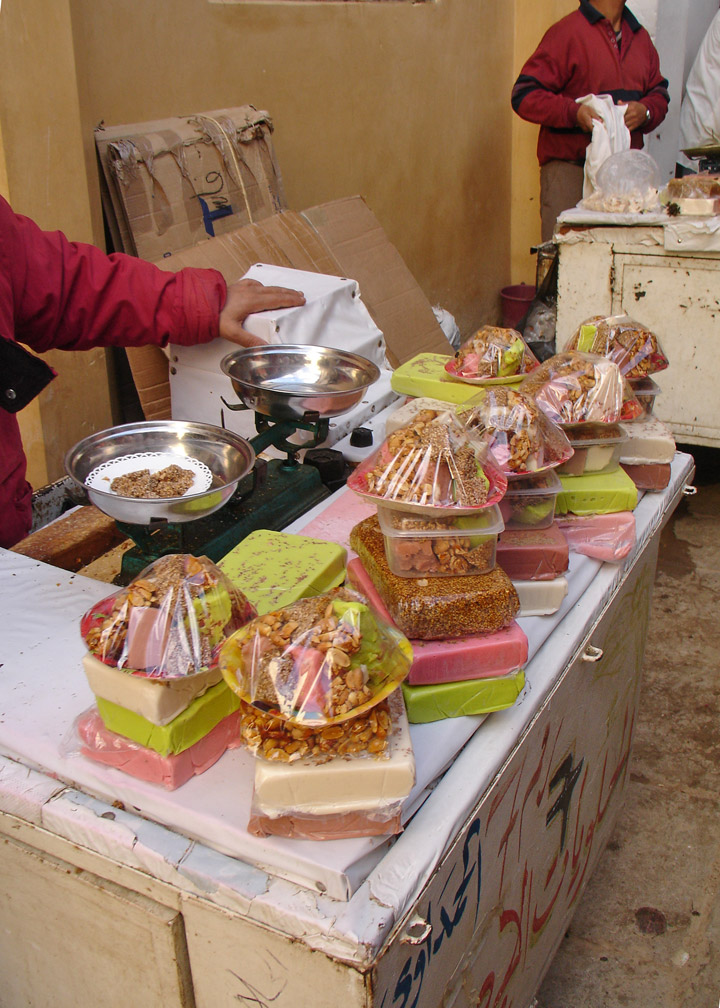
finish off with sweets